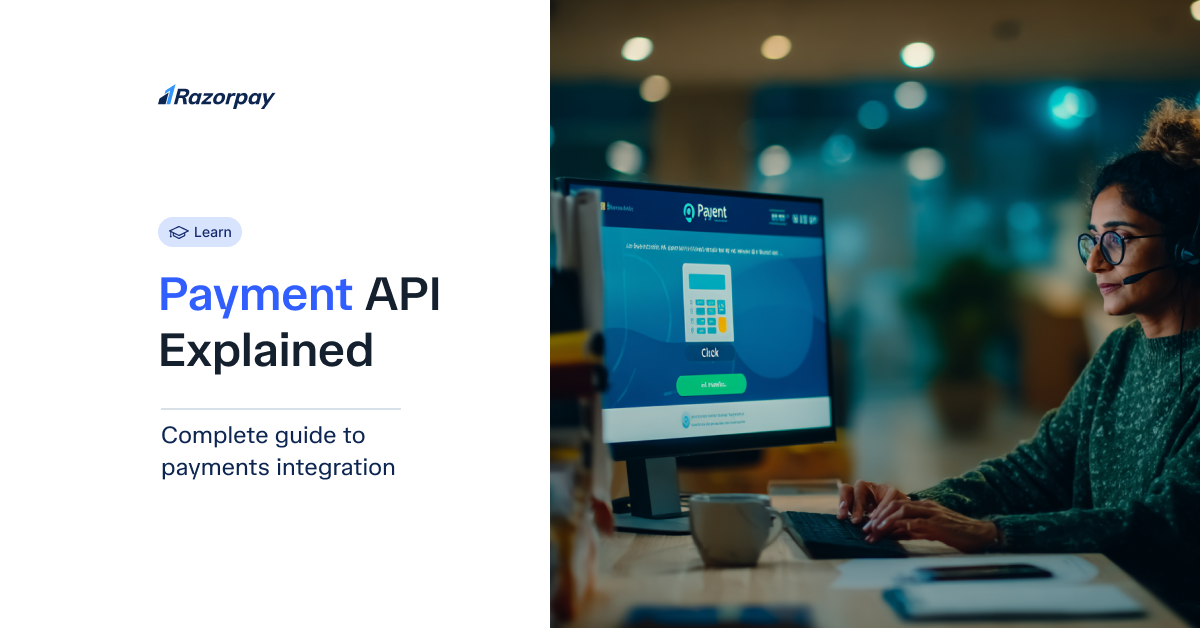We all know that today, businesses can’t afford clunky payment experiences. That’s where Payment APIs step in. A Payment API (Application Programming Interface) enables websites and mobile apps to accept online payments, automate transactions, and offer smooth, secure checkout experiences for users. Whether you’re running an e-commerce store, a SaaS platform, or a fintech app, Payment APIs are the invisible engine powering seamless digital commerce.
Let’s explore how Payment APIs work, why they matter, and how they can elevate your business—locally and globally.
What Does API Stand For?
API stands for Application Programming Interface.
- Application refers to any software or app you use, like a shopping website or mobile wallet.
- Programming is the language or code used to build apps.
- Interface is the connection point where two systems interact and communicate.
So, an API is like a waiter at a restaurant—it takes your order (request), tells the kitchen (server), and brings back your food (response), all without you entering the kitchen.
What is a Payment API?
A Payment API is a tool that allows businesses to connect their apps or websites to a payment processor. Instead of building complex payment systems from scratch, developers can integrate a payment platform like Razorpay Singapore using a Payment API to start accepting credit cards, digital wallets, bank transfers, and more.
Imagine you’re running a food delivery app. With a Payment API, you can let users pay directly in-app, without redirecting them to another page, making the checkout experience faster and more secure.
How Do Payment APIs Work?
Here’s a step-by-step breakdown of how a Payment API powers an online transaction:
Step 1: Customer Checkout
A user places an order and enters payment details on your website or app.
Step 2: API Sends Data to the Payment Platform
The Payment API securely sends the payment data to a payment platform, which checks the details and processes the transaction.
Step 3: Payment Platform Communicates with Bank
The payment platform contacts the customer’s bank or card issuer to request payment authorization.
Step 4: Bank Responds
The bank approves or declines the transaction. This response is sent back to the platform via the API.
Step 5: Transaction Confirmation
The API updates the app or website in real-time, showing whether the transaction was successful.
Step 6: Funds Transfer
Once approved, the money is transferred to the merchant’s account, often after some processing time.
All this happens in a matter of seconds—securely and efficiently—thanks to Payment APIs.
Which Types of Businesses Use Payment APIs?
Payment APIs are used across industries. Here are some examples:
- E-commerce Stores
Sell products online and need real-time payment collection. - SaaS Companies
Charge monthly or annual subscriptions from global users. - Fintech Platforms
Enable P2P payments, digital wallets, or lending. - Marketplaces
Handle transactions between multiple buyers and sellers. - Travel & Booking Sites
Allow customers to book tickets or hotel stays online. - Online Learning Platforms
Collect course fees or exam payments securely.
How Payment APIs Benefit Your Business?
Here’s how integrating a Payment API can give your business a competitive edge:
- Seamless Checkout
Let customers pay without redirection or friction. - Faster Transactions
Reduce delays and boost customer satisfaction. - Enhanced Security
With tokenization, encryption, and PCI compliance. - Multi-Currency Support
Accept payments from customers around the world. - Automation & Efficiency
Eliminate manual tasks like reconciling payments. - Scalability
Add new payment methods and markets as you grow. - Insightful Analytics
Track transactions and customer behaviour easily.
How to Choose the Best Payment API for Your Business?
Not all Payment APIs are created equal. Here’s what to consider before you choose one:
1. Security Features
Look for PCI DSS compliance, encryption, and fraud detection.
2. Ease of Integration
Check for SDKs, developer docs, and tech support.
3. Payment Method Support
Ensure it accepts cards, wallets, UPI, bank transfers, etc.
4. International Coverage
Can it process global currencies and handle compliance?
5. Pricing and Fees
Compare transaction charges, setup fees, and hidden costs.
6. Reliability
Go for a provider with high uptime and low latency.
7. Customer Support
24×7 support can be a lifesaver in high-volume environments.
Expand Globally with Ease Using Razorpay’s Powerful Payment APIs
Razorpay’s Payment APIs are built for modern, fast-growing businesses that want to go global without borders.
Accept payments in 100+ currencies, ensure real-time settlements, and stay compliant with international standards—all through one integration. Whether you’re a Singapore-based startup or a global e-commerce brand, Razorpay’s developer-first APIs ensure scalable, secure, and seamless transactions.
With dedicated onboarding support and transparent pricing, Razorpay makes cross-border commerce effortless.
Conclusion
Payment APIs are the engine behind today’s seamless digital payment experiences. From helping businesses accept global payments to enhancing security and reducing friction, they are crucial in modern commerce.
If you’re looking to scale, automate, and secure your online transactions, now’s the time to adopt a robust payment API solution like Razorpay and future-proof your business.
FAQs
1. Are Payment APIs secure?
Yes. Most Payment APIs follow strict standards like PCI DSS, use SSL encryption, and include fraud detection tools to protect sensitive data during online transactions.
2. Can payment APIs handle international transactions?
Absolutely. Many Payment APIs, including Razorpay’s, support multi-currency transactions and comply with international banking regulations.
3. Is it difficult to integrate a payment API with my system?
Not at all. Most providers offer comprehensive documentation, SDKs, and sandbox environments that make integration simple—even for small dev teams.
4. Is Payment API free?
While integration may be free, transaction charges usually apply. Some APIs also have setup or monthly maintenance fees, so it’s best to review pricing models.




